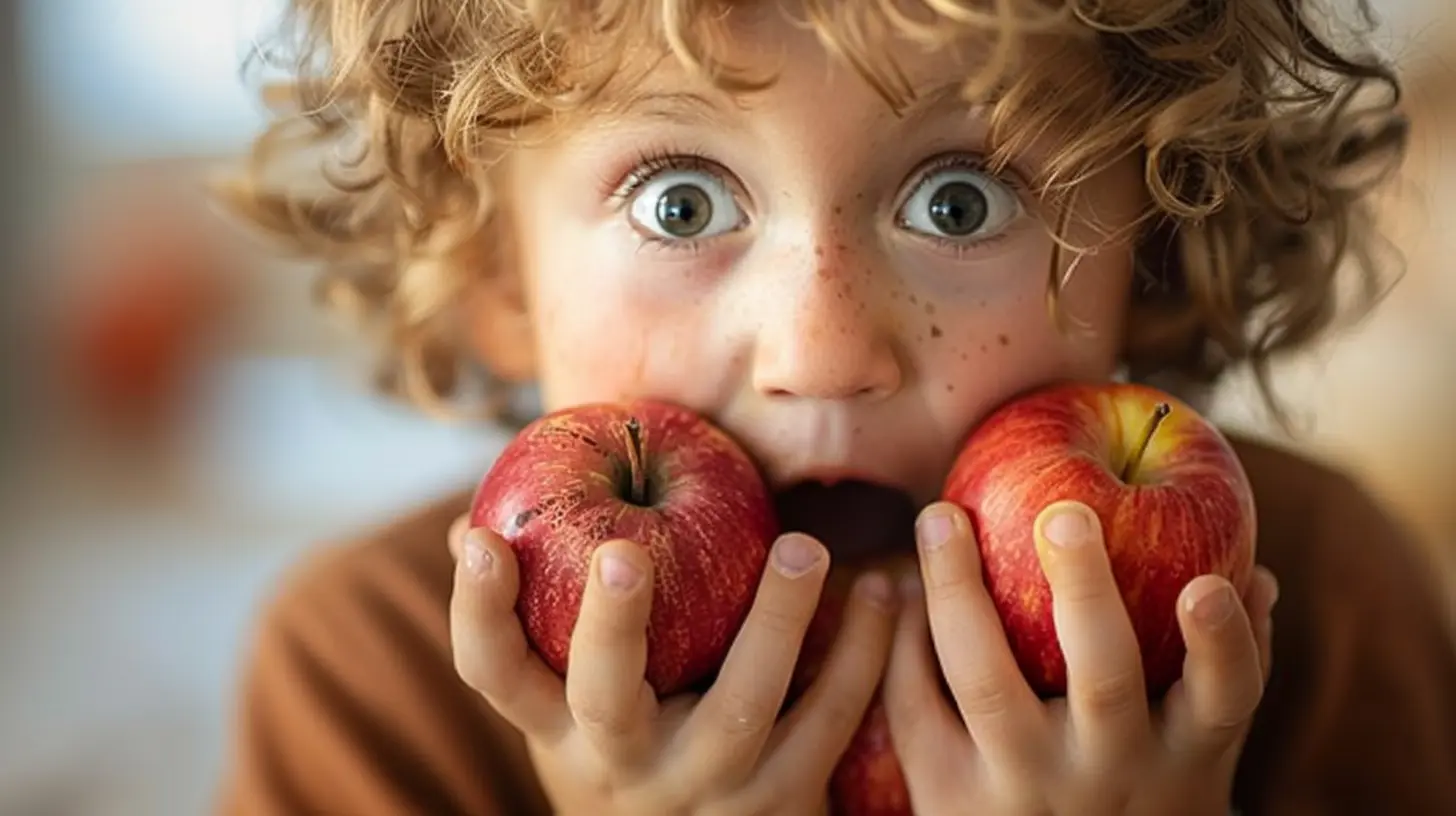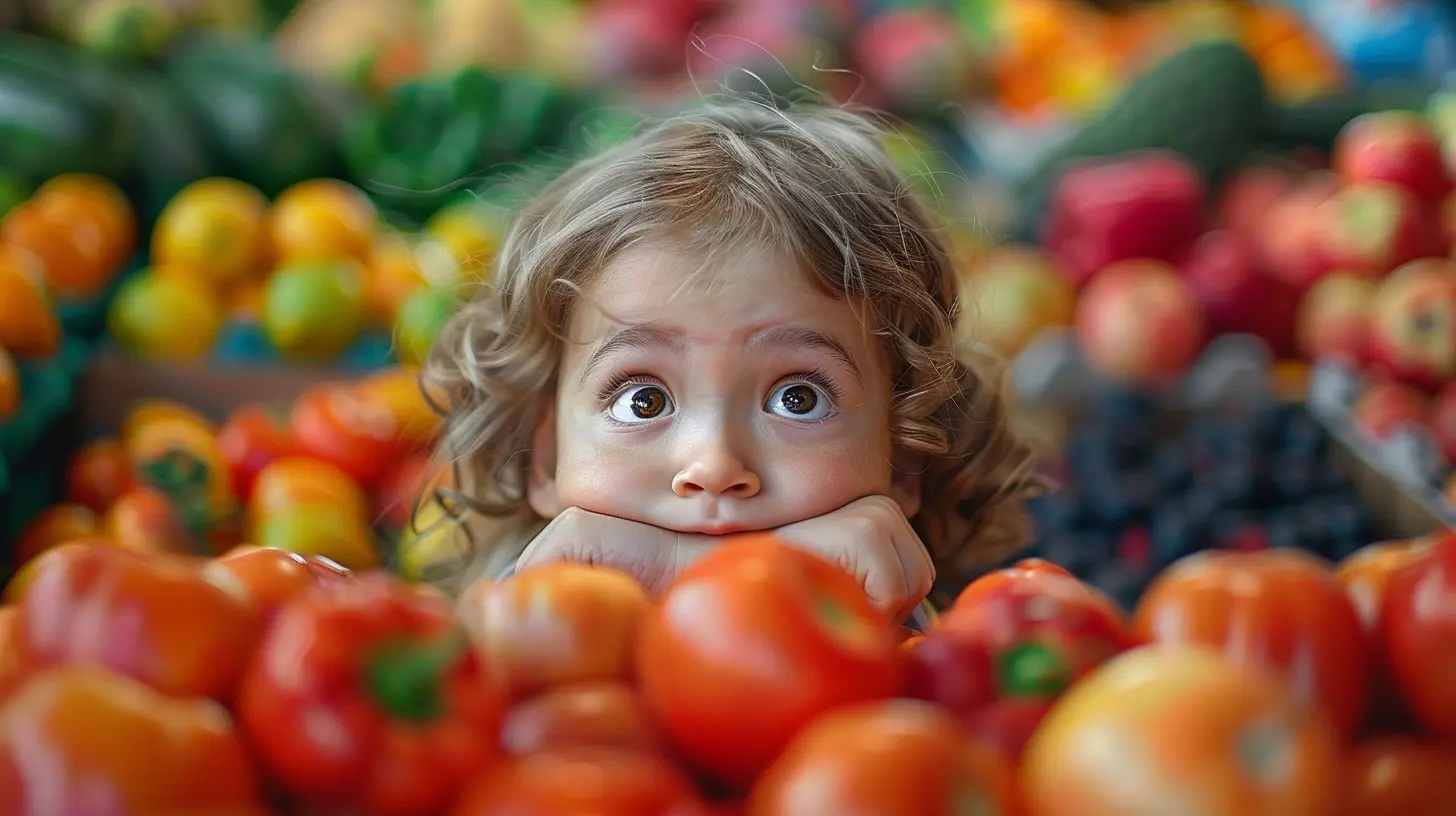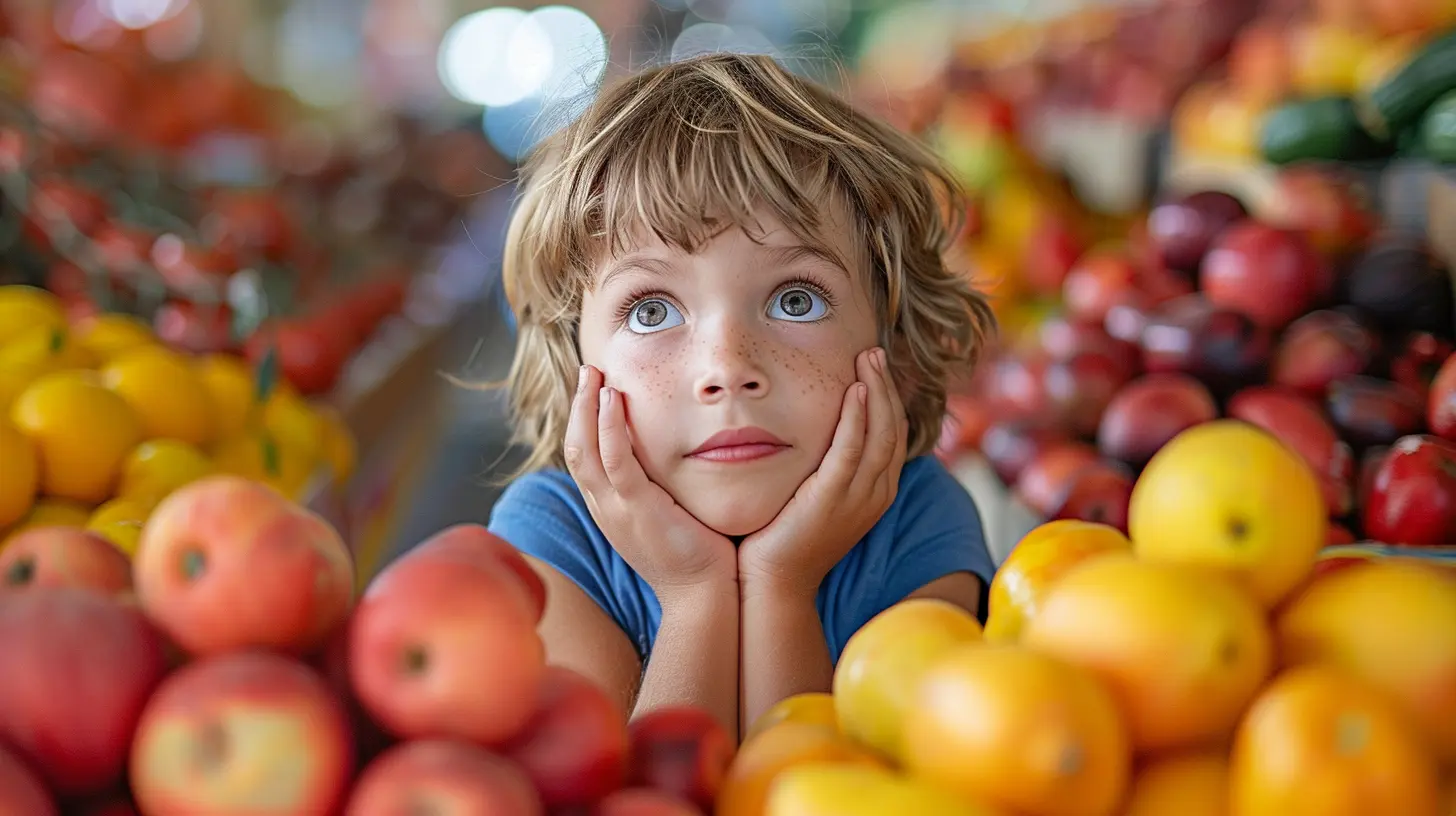Surprising Triggers: Easing Your Child’s Fear of Certain Foods
9 August 2025
Have you ever watched your child turn pale at the sight of a plate of peas or completely meltdown over a slice of tomato on their sandwich? You're not alone. Kids can be picky eaters—we expect that. But sometimes, it’s not just pickiness. It’s fear. Yes, actual fear of food. And as baffling (and frustrating) as it might be, there’s usually more going on beneath the surface.
So, what causes these food fears in children? How do we spot the signs? More importantly, how do we help our kids feel safe around things like mushy bananas or “suspicious” sauces?
Let’s unpack this tender topic together, one bite at a time.
What Is Food Fear in Kids, Anyway?
Food fear (also known as avoidant or restrictive food intake) isn’t just about being fussy. It’s a deeper, almost primal response. When a child refuses a food because of how it looks, smells, or feels in their mouth—often with real distress or even panic—that’s not rebellion or drama. It’s fear talking.And no, your child isn’t trying to drive you crazy. Their little brain is doing everything it can to protect them from a perceived threat, even if that threat is a slippery mushroom.
Why Do Some Kids Develop Food Fears?
Honestly, the reasons can be pretty surprising. It’s not just about taste. Let’s break down a few unexpected triggers that might be behind your child’s aversion.1. A Bad Experience That Lingers
Let’s say your child once choked on a grape or threw up after eating chicken nuggets. Even if it was months ago (or honestly, years), their brain could’ve forged a connection: _This food = danger_. That one-off trauma might be replaying every time they spot that food again.Think of it like touching a hot stove—once is enough to make you think twice.
2. Texture Over Taste
Kids are incredibly sensitive to textures. Some can’t handle slimy, mushy, grainy, or even crunchy foods. That strange mouthfeel might overwhelm their sensory system like nails on a chalkboard.Even if they _want_ to like the food, their body might be shouting a full-body “NOPE.”
3. Mimicking an Adult’s Reaction
Ever flinch while biting into something sour or bitter? Kids see that. And sometimes, they absorb our reactions like a sponge—not just to flavors, but to how we talk about food.If you muttered “gross” about broccoli even once, they might carry that message into every meal.
4. Fear of the Unknown
New things are scary—especially when they’re going into your belly. If a child doesn’t recognize or understand a food, it can feel freaky. Unfamiliar smells, colors, or shapes trigger the brain’s alarm bells.Let’s face it, even some adults shy away from anything that looks remotely “weird” on the plate.
Spotting Food Fear: Signs It’s More Than Just Being Picky
How do you know when it’s food fear and not just a preference? Keep an eye out for these clues:- They cry, scream, or panic when served a certain food
- They gag or struggle to swallow before even tasting
- They express worry before meals (“What’s for dinner? Is there broccoli?”)
- They only eat a handful of “safe” foods—nothing beyond their comfort list
- They avoid situations where certain foods might be served (like birthday parties)
Here’s the key difference: Picky eaters say “Yuck.” Kids with food fear say “I’m scared.”
So... What Can You Do About It?
Here’s the good news: With time, patience, and a few creative tactics, you can help ease your child’s food fears. You’re not going to squash the fear overnight, but you can build trust and curiosity around food step by step.Let’s dig into how.
1. Start by Validating Their Feelings
This is huge. Before any progress can happen, your child needs to feel heard. Telling them “Don’t be silly, it’s just mashed potatoes” won’t help—it might actually make them feel ashamed or more anxious.Instead, say something like:
“I see that this food makes you nervous. That’s okay. You’re safe, and I’m here with you.”
This helps remove the pressure and lets them know their feelings are valid.
2. Use the “No Pressure” Approach
Take the food battle off the battlefield. Try what feeding therapists call the “Division of Responsibility” (coined by dietitian Ellyn Satter). Here’s how it works:- You decide what food is served, when, and where.
- Your child decides whether and how much to eat.
It’s not about forcing one more bite. It’s about building a safe, low-pressure space around food.
Trust works better than threats—every time.
3. Involve Them in the Kitchen
When kids help prepare food, they’re way less likely to fear it. Why? Because they get to explore it without the pressure of eating it.Let them:
- Wash vegetables
- Stir ingredients
- Use cookie cutters on fruit slices
- Plate their own meals
The more familiar they get with handling the food, the less foreign (and frightening) it becomes.
4. Make Food a Plaything (Yes, Really)
You know that golden parenting rule “Don’t play with your food?” Time to toss it out the window—at least temporarily.Food play is a therapy tool. You’re not rewarding “bad behavior”; you’re helping desensitize their fear.
Build a mashed potato volcano, paint with yogurt, make spaghetti hair on a smiley face pancake. When kids laugh around food, fear fades into the background.
5. Use Food Bridges
Let’s say your child eats applesauce but fears apple slices. That’s your “bridge.” Try slowly shifting form and texture:- Applesauce → mashed apples → thinly grated apple → apple slice
From familiar to unfamiliar, one small step at a time. Each stage helps build trust.
6. Model Calm, Curiosity-Filled Eating
Eat the foods they fear—with enjoyment. Let them see your relaxed body language, your “Mmm, this is crunchy!” excitement.Don’t go overboard or guilt-trip them into trying it. Instead, narrate your experience like a food scientist.
Think:
“I wonder what this texture feels like. It’s kind of chewy and sweet at the same time. I like how it crunches.”
Make it sound like an adventure, not an order.
7. Be Patient, Even When It’s Hard
Let’s be honest—easing food fears can be exhausting. You’ll have days when you want to throw in the towel (and maybe the broccoli, too). But progress comes in tiny wins.A sniff. A lick. A nibble. Even sitting near the food without crying is a big deal. Celebrate it.
Progress, not perfection.
When to Seek Help
If your child eats fewer than 20 foods, avoids entire food groups, or is losing weight, it’s time to call in some support. A pediatric feeding therapist or occupational therapist can work wonders.Also, if mealtime is a war zone every night, or you’re constantly worried, you don’t have to go it alone. Help is out there—ask your pediatrician for a referral.
Final Thoughts: It’s Not About “Fixing” Your Child
Your child isn’t broken. And you’re not a bad parent. Food fear is tricky, but it’s manageable. With compassion, creativity, and a whole lot of patience, you can help your child navigate their fears—without forcing, shaming, or bribing.The goal isn't to get them to devour a plate of kale overnight. It’s to help them feel safe, confident, and curious at the table again.
So next time they push away a plate with tears in their eyes, take a step back, breathe, and remember: Fear thrives in pressure, and fades in love.
Now go ahead, pass the peas—gently.
all images in this post were generated using AI tools
Category:
Dealing With FearsAuthor:

Steven McLain
Discussion
rate this article
1 comments
Damon Carrillo
Fear of food isn’t just picky eating—it’s a powerful emotional response! Let’s stop sugarcoating it and face these triggers head-on. Empower your child to embrace new flavors and conquer their fears!
August 19, 2025 at 2:32 AM

Steven McLain
Absolutely! Addressing the emotional roots of food fears is crucial. Empowering children to explore new flavors can transform their relationship with food. Let's tackle these triggers together!


